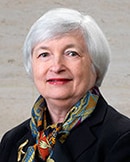

ICE has approximately 40% of sterling interest rate risk exchanged in Sonia futures ahead of the ending of sterling Libor at the end of this year.

Steven Hamilton, ICE
Steven Hamilton, global head of derivatives at ICE, told Markets Media: “The Libor transition is a seismic change in the rates market, the like of which has not been seen for more than 20 years.”
The UK Financial Conduct Authority said in March this year that Libor settings will either cease to be provided by any administrator or no longer be representative immediately after 31 December 2021 for all sterling, euro, Swiss franc and Japanese yen settings, and the one-week and two-month US dollar settings. The remaining US dollar settings will end immediately after 30 June 2023.
The UK has chosen Sonia as its risk-free rate while the US Alternative Reference Rates Committee (ARRC) has selected SOFR to replace US dollar Libor.
Hamilton said: “From the conversations we are having and the amount of risk being exchanged, listed Sonia contracts are increasingly a useful tool for market participants and our clients are telling us that it’s easier to use standardised instruments to manage this big change.”
ICE said in a statement that 40% of sterling interest rate risk is regularly exchanged in Sonia futures markets.
After the financial crisis there were a series of scandals regarding banks manipulating their submissions for setting benchmarks across asset classes, which led to a lack of confidence and threatened participation in the related markets. As a result, regulators have increased their supervision of benchmarks and want to move to risk-free reference rates based on transactions, so they are harder to manipulate and more representative of the market.
Hamilton said that a wholesale transfer of open interest has not yet happened but the volume of incoming calls to discuss Sonia liquidity and ICE’s migration plan has definitely increased.
Open interest in Sonia futures and options has reached a record of 325,437 contracts, equivalent to a notional value of £325.4bn ($456bn), up 131% since the start of this year according to a statement from ICE. In addition, average daily volumes in Sonia futures and options have grown to approximately 150,000, up 156% from a year ago.
Interest Rate futures & options open interest ⬆️ 32% y/y at ICE.
• OI in Sterling and SONIA futures & options ⬆️ 54% y/y and by more than 200% y/y, respectively.
• Euribor OI ⬆️ 7% y/y.
• OI in ICE Gilt futures & options ⬆️ 37% y/y.Read more: https://t.co/QZOIJkgoV1
— ICE (@ICE_Markets) June 14, 2021
In addition, the first trades in Sonia 1-year mid-curve options took place on 10 June and the first trade in Saron futures on 11 June. Saron is the risk-free replacement for 3-month EuroSwiss futures.
“We have worked very hard with the market-making and liquidity provider community to ensure there is a bridge to the new products for those who want to transition early,” added Hamilton.
He continued that ICE has outlined in its transition plans that the exchange plans to convert open interest in Short Sterling and EuroSwiss into Sonia and Saron respectively following the close of business on 17 December.
“Increasingly we are hearing that firms will look to own their economics and my expectation of how many will move earlier than that has increased over the past six months,” said Hamilton.
Record volumes
ICE reported it had record open interest of 85.8 million contracts on June 10 2021 across the exchange.
Record open interest of 85.8 million contracts on June 10 on ICE.
Total Open Interest ⬆️10% y/y.
Read more here >>> https://t.co/ug2IQEk9Jr
— ICE (@ICE_Markets) June 14, 2021
Interest rate futures and options open interest has risen by a third, up 32%, year-on-year. Open interest in sterling futures and options is up 54% from a year ago and in Sonia futures and options by more than 200% over the same period.
Hamilton said record open interest in futures and options in rates is being driven by fundamentals such as the reopening of world economies, the release of pent up consumer demand and views on how that will affect jobs and potential changes to monetary policy from central banks.
“Inflation in particular for example presents certain risks to our clients’ businesses which results in increased need for our risk management tools,” he added.
He continued that at the start of the pandemic last year open interest dropped in Gilt futures due to the liquidation of assets to raise cash during that period. ICE Long Gilt futures are the highly liquid market benchmark for UK Government Bonds.
“Long Gilts open interest is now more than 700,000 contracts compared to about 650,000 when we went into the pandemic, and in February we reached a single day volume record of more than 1.91 million contracts in Gilts alone which is really encouraging for the long-term growth of the market,” said Hamilton.
US Libor transition
Janet Yellen, Secretary of the US Treasury said in a speech on June 11 that the Financial Stability Oversight Council first discussed the importance of reference rate reform in 2012, and a great deal of progress has been made since then with ARCC selecting SOFR.

Janet Yellen, Treasury Secretary
Yellen said: “SOFR provides a robust rate, suitable for use in most products and with underlying transaction volumes that are unmatched by other Libor alternatives.”
ARRC has also drafted contractual fallbacks to alternative rates, facilitated the development of SOFR derivatives markets; developed conventions for the use of SOFR across asset classes; and proposed legislation to help transition certain legacy contracts which has been enacted by New York State.
However, Yellen continued that despite this progress, a critical juncture has been reached and more must be done to facilitate an orderly transition. She continued that some business segments, including business loans, are well behind where they should be at this stage in the transition.
“I encourage market participants to act promptly to support the switch in derivatives from Libor to SOFR this summer, as suggested by the CFTC’s benchmark subcommittee on benchmark reform and the ARRC,” she added. “It is important for term SOFR to be grounded in a deep SOFR derivatives market and to be used in a way that does not diminish that activity. Action by market participants now will allow the ARRC to recommend a term SOFR rate quite soon.”
On 8 June the Commodity Futures Trading Commission’s Market Risk Advisory Committee’s (MRAC) Interest Rate Benchmark Reform Subcommittee voted to recommend a market best practice it calls “SOFR First.”
NEWS: CFTC’s MRAC Interest Rate Benchmark Reform Subcommittee announces SOFR First, its recommendation for transitioning from LIBOR to SOFR for USD linear interest rate swaps beginning July 26. Read the latest here: https://t.co/eWstMabPm3
— CFTC (@CFTC) June 8, 2021
“SOFR First, a best practice modeled after the U.K.’s Sonia First, represents a prioritization of interdealer trading in SOFR rather than Libor,” said the CFTC. “Specifically, the Subcommittee recommends that on July 26, 2021 and thereafter, interdealer brokers replace trading of Libor linear swaps with trading of SOFR linear swaps.”
Unlike in the UK, the US market has developed a number of RFRs to replace US dollar Libor.
For example, The American Financial Exchange (AFX), an electronic exchange for direct lending and borrowing for American banks and financial institutions, will publish spot Ameribor term structure of interest rates.
AFX said in a statement that lenders are looking for alternative interest rate benchmarks and Ameribor currently provides the only exchange-traded and regulated credit-sensitive overnight lending benchmark specifically designed to track activity in the unsecured lending market, and thus reflects the actual market stress as it trades.
Robust #AMERIBOR interest rate term structure provided by partnership w/ @The_AFX and @Numerix. #AMERIBOR is a replacement for #LIBOR that reflects #MainStreet cost of funding, not #WallStreet. https://t.co/XB6JmqnIkY
— Chris Giancarlo (@giancarloMKTS) May 26, 2021
Bloomberg is also publishing a Short-Term Bank Yield Index (BSBY). CME Group has announced it will launch interest rate futures based on BSBY which will be available for trading in the third quarter of this year.
Attn Rates Traders:
Futures on the Bloomberg Short-Term Bank Yield Index (#BSBY) coming in Q3. https://t.co/WdcGon19Ef
— CME Group (@CMEGroup) May 24, 2021
Umesh Gajria, Global Head of Index Linked Products at Bloomberg, said in a statement: “We look forward to the upcoming launch of BSBY futures, which will help meet the current client need for credit sensitive rates. As the use of BSBY grows in the U.S. lending markets, these futures will allow market participants to manage their risk.”
Yellen said in her speech that decisions made now around the selection of alternative rates will determine whether some of Libor’s shortcomings may be replicated through the use of alternative rates that lack sufficient underlying transaction volumes.
“I am concerned about recent use, and potential future growth in use, of these rates in derivatives, where the volume of derivatives contracts referencing these alternative rates could quickly outnumber the transaction volumes underlying the reference rate, leaving it vulnerable to manipulation and disruption – one of the primary issues with Libor,” she added. “The most critical step in the transition is the move toward truly robust alternative rates, like SOFR, which can mitigate the need for future transitions.”
.






